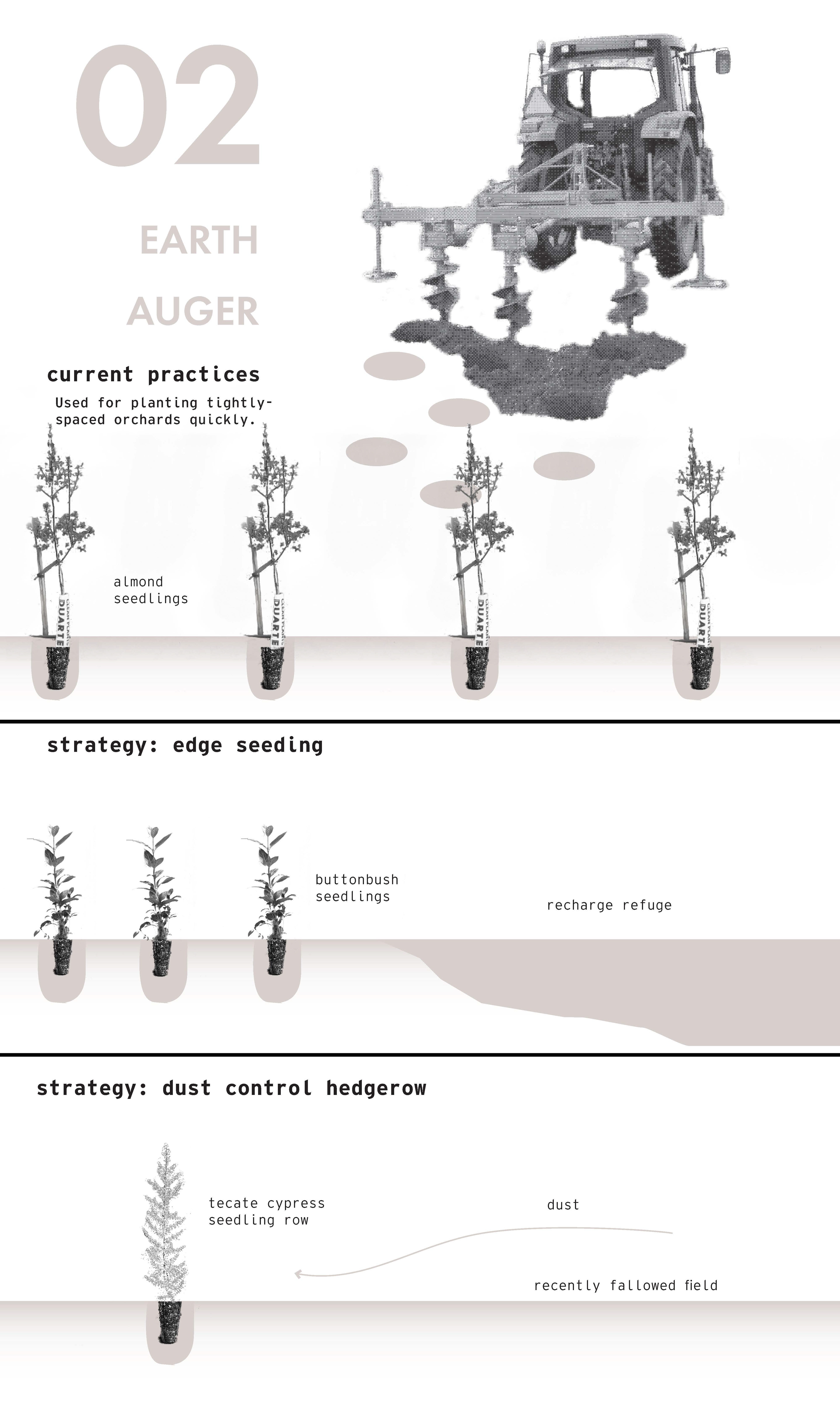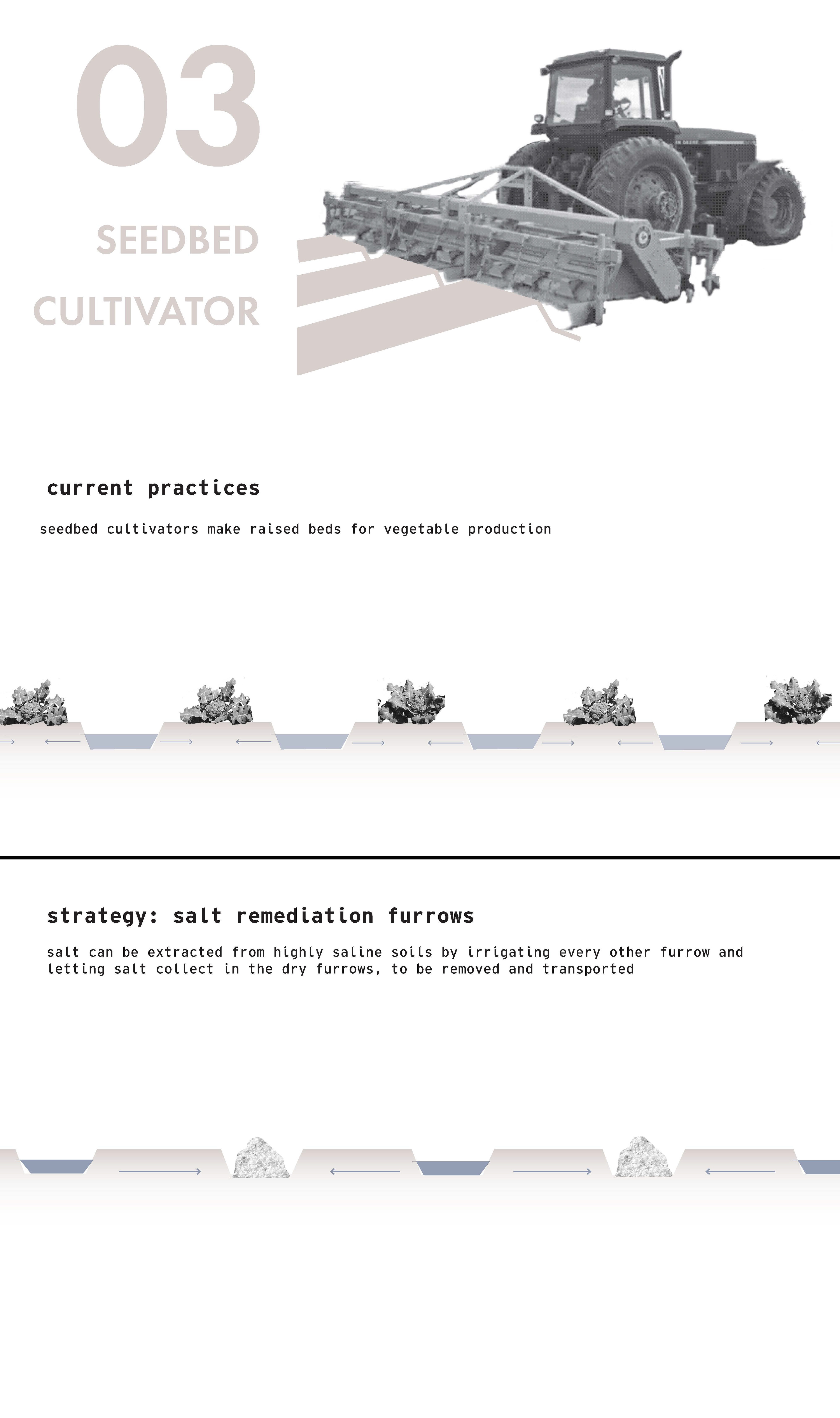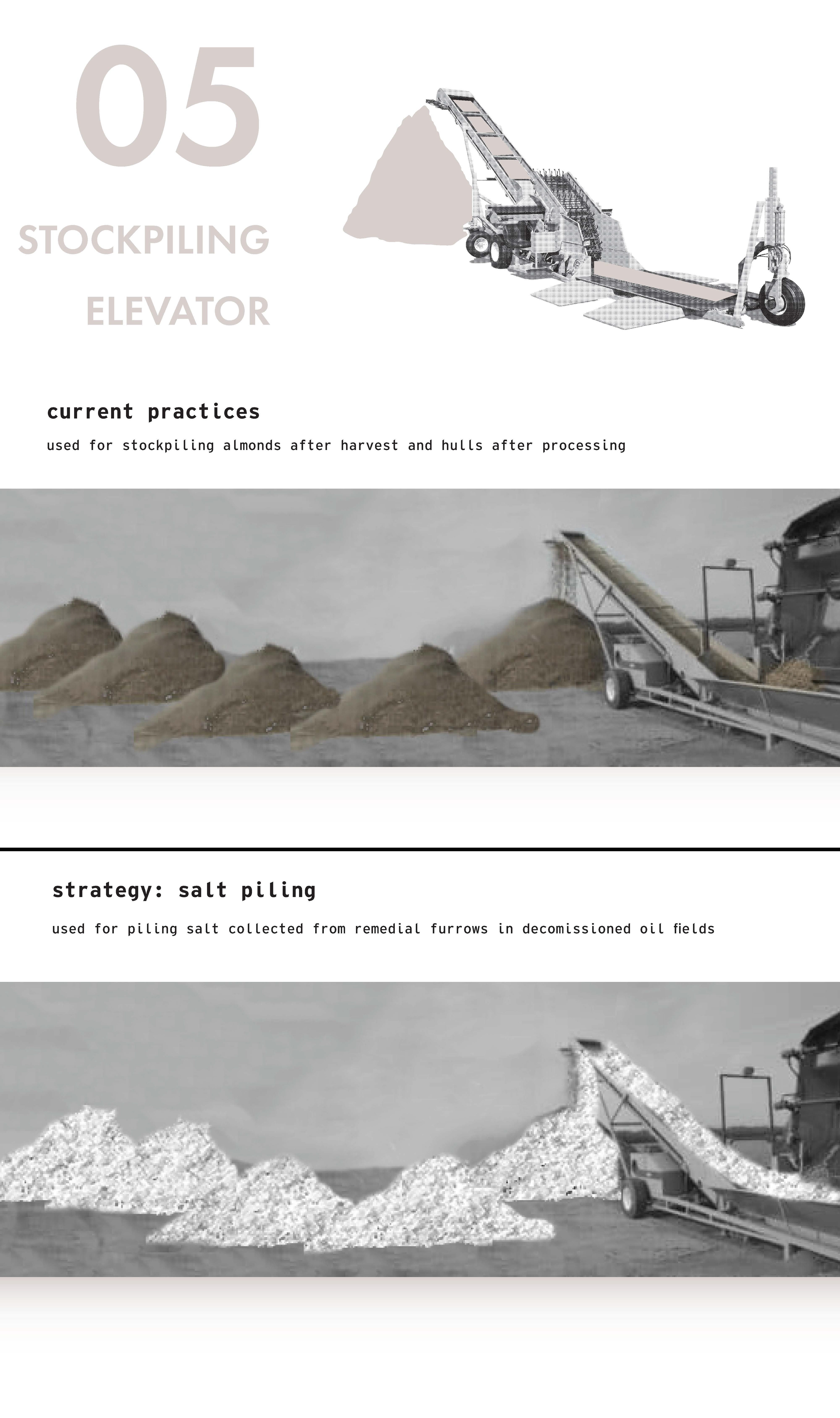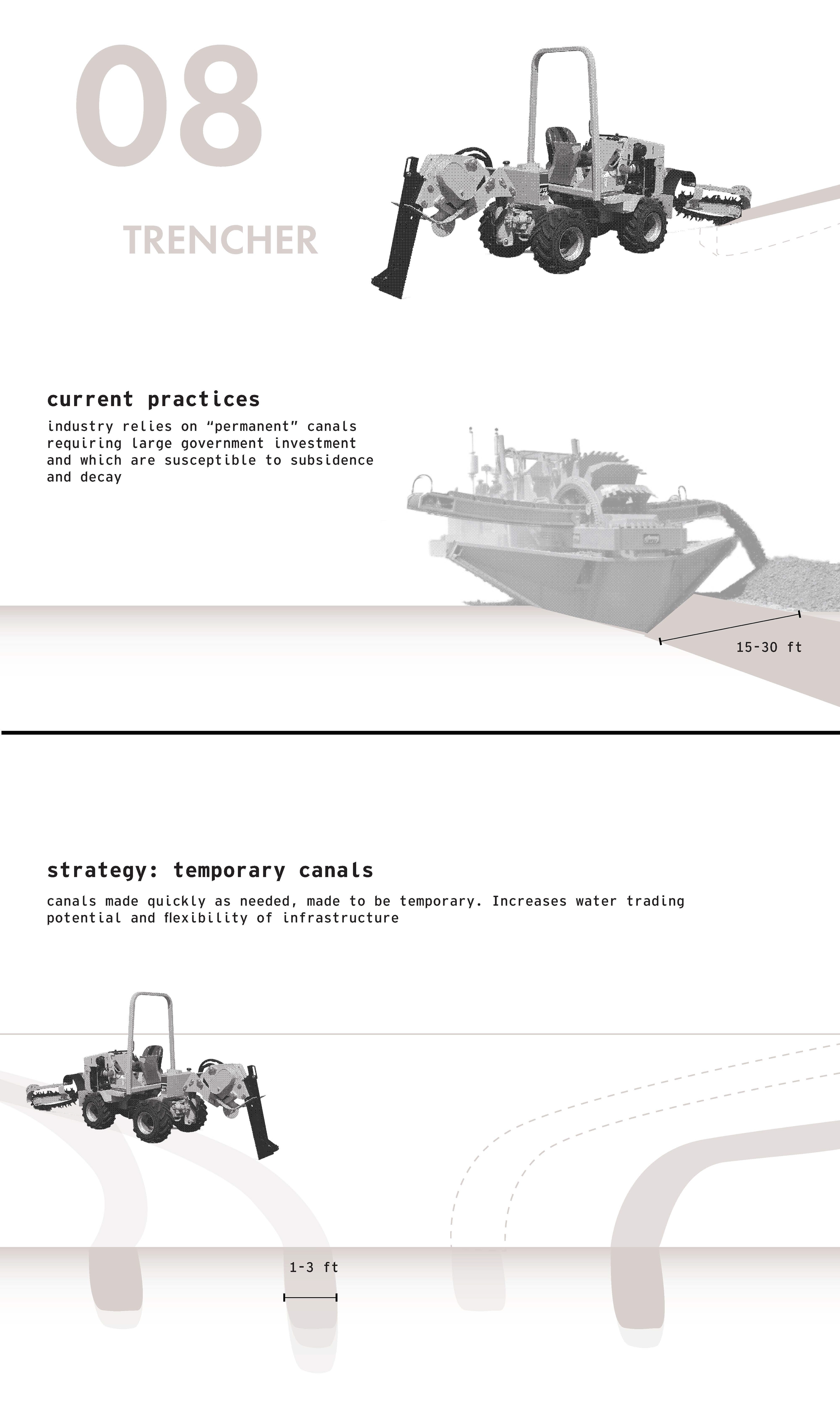Collaborative project with Gaelle Gourmelon and Chloe Nagraj.
Work was executed by myself unless otherwise noted.
2019 VA ASLA Commendation Award in the Analysis and Planning Category
During our field visit we spoke with farmers using both mainstream and alternative practices. We witnessed a landscape on the brink of water-scarcity collapse as a clearly defined mosaic of five types: Orchard, Recharge Pond, Oil Field, Nature Reserve, Ground Crops. This county (Kern) produces both the most oil and the most food crop revenue of any place in the United States. Photo by Chloe Nagraj.
project manifesto
photograph from our field visit by Chloe Nagraj
Section by Chloe Nagraj
Map by Chloe Nagraj
Mapping vulnerabilities of the Southern San Joaquin Valley (Collaborative map)
Our design was a catalog of strategies using the tools of current practices in new ways, to transition into a shifting mosaic of new and existing landscape forms that could be more responsive to changing conditions. Collaborative list drawn by Chloe Nagraj.









Drawing by Chloe Nagraj
Project atlas and tools manual